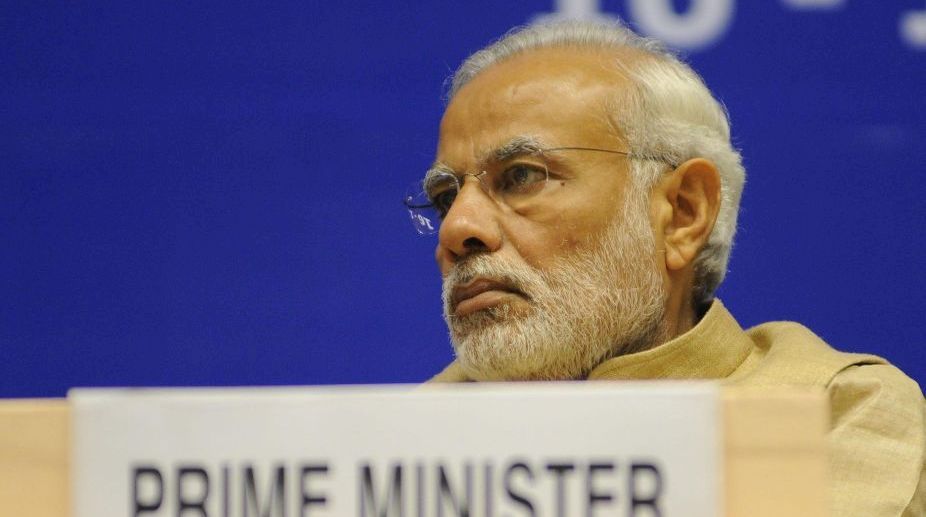The change in Government in 2014 has led to a sudden interest in our history. At one level history is being re-written with facts not suiting the current dispensation being airbrushed; thus we have Maharana Pratap getting even with Akbar and Taj Mahal being demoted to a symbol of barbarity.
This is a futile exercise because those who do not learn from history are doomed to repeat it and learning can begin only with an acknowledgement of facts. At another level, the history of post-independence India is being reinterpreted, which is not a bad thing because we should have no totems or taboos in a historical narrative.
However, this raging debate has missed one important thread running through the entire post-independence period. Why does our stupendous progress not reach the last man in the queue? Even after the green revolution, the white revolution, liberalisation, globalisation, antyodaya, garibi hatao, achche din etc.
why are our social progress indicators still stuck at the bottom? Why are we at number 100 in the World Hunger Index? The paradox of an India as a wealthy country with poor inhabitants is truly puzzling because beginning with the Mahatma, modern India always had leaders like Jawaharlal Nehru, Indira Gandhi, Atal Behari Vajpayee and Manmohan Singh who had exceptional vision and ability and who tried their utmost to ameliorate the lot of our poor countrymen.
The failure, obviously, has been one of implementation. Leaders can only suggest a blueprint; it is for the bureaucracy to flesh it out and put it into operation. The failure of our bureaucracy to implement social reforms is really intriguing because our bureaucrats are recruited after clearing one of the world’s toughest examinations and are rigorously trained thereafter.
Noticing the lacklustre performance of the bureaucracy in this and many other crucial spheres, the Government constituted two Administrative Reforms Commissions (ARCs). Each ARC gave voluminous recommendations for the bureaucracy’s betterment but there was no change on the ground perhaps because the implementation of the recommendations of the ARCs was left to the bureaucracy. Clearly, it was wrong to expect the bureaucracy to reform itself; as Warren Buffet had famously said after the global meltdown of 2008 “Don’t go to the finance guys to get us out of the crisis.
They are the ones who got us there in the first place.” The bureaucracy has a complete stranglehold over administrative processes which are so convoluted that even a simple decision can be taken only after following a number of rules, subrules, instructions and circulars. Any person who wants the Government to do something has to be on the right side of the bureaucracy otherwise he would have to wait till Armageddon.
The Elphinstone Road mishap was a tragic consequence of this phenomenon. The need for a new foot overbridge was voiced by many citizens, including a couple of MPs. The Railway Minister ~ himself a Mumbaikar ~ was also aware of the problem. Yet, no action was taken for two years because all proposals have to be implemented by the bureaucracy which generally takes its time till a crisis is precipitated or the problem resolves by itself.
In the instant case, to delay matters yet to show action on the file, an allocation of Rs100 was made for construction of the overbridge costing Rs12 crore. The file, the key to the bureaucrat’s power, is initiated by the juniormost officer in the setup, who proposes a particular action in his opening note, which is backed by rhetoric, precedents and rules.
The veracity of the assertions made in the note is never examined; for example the Adarsh Building was proposed as a refuge for Kargil war widows but allottees ~ ranging from Ministers to Army Generals to Secretaries ~ did not include even a single Kargil widow. Almost always seniors dictate the contents of the crucial opening note, which is generally approved by all concerned. If questions are raised afterwards, the standard reply is that proper procedure was followed.
Consider this: under a particular finance minister transfer lists of Income-tax Commissioners travelled from below with officers at each level making their own changes but when the list became final, the earlier notesheets were shredded and a final note-sheet was prepared which was signed by all. This welldesigned scam blew up when the CBI caught one of the persons who was paying a bribe for his transfer. Such scams are possible only because our governance is focused more on form than substance. Anything can be done if the prescribed procedure is followed; conversely even the most urgent task cannot even be started till a proper file is prepared, notes are written and approved.
Since bureaucrats control the life-cycle of a file, work proceeds at the pace ordained by them. A proposal can be brought to a screeching halt by writing “Please discuss” or “Consult such and such ministry.” Since time is of the essence in most important matters, the ability to delay puts enormous power in the hands of bureaucrats.
One of the main reasons for delay in decision-making is that our Government operates on a system of checks and balances which in practical terms implies that no one can do anything by himself; a number of consultations and permissions are required for any action which is afterwards scrutinised vengefully by the 4 Cs ~ CAG, CVC, CBI and the Courts. On pain of lifelong infamy, the person taking a decision is obliged to explain any honest mistake or initiative to the satisfaction of these agencies. No wonder, often delaying decisions or not taking a decision appears to be a more attractive proposition to the hapless officer.
Is there a way out of the bureaucratic maze? Yes, if we can tackle the real culprits ~ bureaucratic mindsets, complex rules, bureaucratic hierarchy and irrational deployment of resources. The bureaucratic mindset is primed to maintain status quo and to reject rather than to accept any initiative. Often, long and far-fetched arguments are recorded on note-sheets to negate perfectly sensible proposals. If we want a Government that works, bureaucratic minds would have to be rewired to think on how and why a proposal should be accepted rather than the other way round.
Till a complete change in approach takes place the bureaucracy will continue to be a stumbling block in our progress. The bureaucrat’s stranglehold over administration is perpetuated by the complex rules framed by them; such rules can readily be understood by other bureaucrats but seldom by people who have to follow those rules. Often contradictory and ambiguous, administrative rules give rise to delays, corruption and litigation.
We can consider an alternative; if the plethora of rules is replaced by a set of general guidelines, drafted in simple language, red tape would disappear because there would be no scope for nitpicking. Abolition of rules would also limit the role of the 4 Cs to really bad cases because with fewer rules there would be fewer technical defaults. The underlying cause of delay and corruption ~ the present file system ~ should be done away with.
Files should be maintained digitally; no files would then be lost or tampered with. All proposals should not go from the lowest to the highest; each level of the bureaucracy should deal with cases according to their importance and complexity. Superior officers can verify a small percentage of decisions of their subordinates to ensure that the subordinates act properly. These changes would reduce the time taken for reaching a decision and would also prevent the diffusion of accountability.
Just think of the immediate benefit; if we abolish files and have a paperless office, we would not need the thousands of peons to carry files which would lead to substantial savings because the average emoluments of lower grade Government employees are around Rs 50,000 per month. Presently, we have a vast army of Government employees coupled with a shortage of persons at crucial positions. Only after being in the Government for some time does one realise that very few Government employees are engaged in core operations; some are engaged in servicing other employees and a sizeable number of Government employees have no work at all.
This problem is not unique to India. Theresa May, the British PM, observed: “We’re getting rid of bureaucracy, so that we’re releasing time for police officers to be crime fighters and not form writers.” Our Government has outsourced security, sanitation and transport, leaving chowkidars, drivers and sanitation staff without work. Additionally, each Government department has a sizeable number of support staff; made redundant by technology.
Such posts should have been abolished long ago and such employees should have been redeployed. Rationalising work profiles and work reallocation (which has not been done in generations) would save money, increase efficiency and release staff for core functions. Keeping in mind the results of our earlier half-hearted experiments with administrative reform, only a complete revamp of Government processes would improve decision-making and efficiency in our bureaucracy.
(The writer is a retired Chief Commissioner of Income-Tax)












